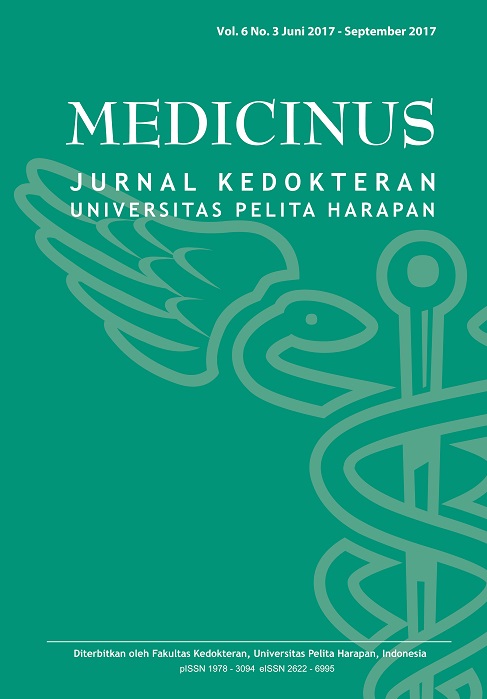Gambaran Dermal-Epidermal Junction Pada Bullous Pemphigoid Dan Epidermolysis Bullosa Acquisita
DOI:
https://doi.org/10.19166/med.v6i3.1151Abstract
Epidermis and dermis of the skin attach each other because of the role of a structure which is called dermal-epidermal junction. The dermal-epidermal junction can be divided into three distinct zones named hemidesmosome-keratin intermediate filament complex, basement membrane, and anchoring fibril. Each part of the distinct zone has significant components for the integrity of the skin. Bullous pemphigoid is an autoimmune disorder caused by autoantibody against a 180-kDa molecule now called Bullous Pemphigoid Antigen 2 (BPAG2) or type XVII collagen within basement membrane. To date, the slot deposit 5000 patophysiology and the components of dermal-epidermal junction that induce the blister formation remain unclear. Epidermolysis bullosa acquisita is an autoimmune disease with sub-epidermal blistering associated with autoimmunity to the collagen within anchoring fibrils. The pathophysiology and etiology””again””remain unknown.
Downloads
Published
How to Cite
Issue
Section
License
Copyright (c) 2018 Caroline Budiman, Mutia Devi, HM Athuf Thaha

This work is licensed under a Creative Commons Attribution-ShareAlike 4.0 International License.
Authors who publish with this journal agree to the following terms:
1) Authors retain copyright and grant the journal right of first publication with the work simultaneously licensed under a Creative Commons Attribution License (CC-BY-SA 4.0) that allows others to share the work with an acknowledgement of the work's authorship and initial publication in this journal.
2) Authors are able to enter into separate, additional contractual arrangements for the non-exclusive distribution of the journal's published version of the work (e.g., post it to an institutional repository or publish it in a book), with an acknowledgement of its initial publication in this journal.
3) Authors are permitted and encouraged to post their work online (e.g., in institutional repositories or on their website). The final published PDF should be used and bibliographic details that credit the publication in this journal should be included.





